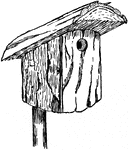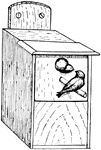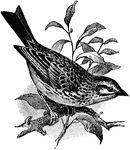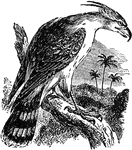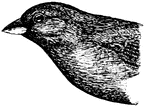
Indigobird (Male)
The Indigobirds and whydahs, are small passerine birds native to Africa. Some species are also known…
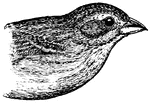
Indigobird (Female)
The Indigobirds and whydahs, are small passerine birds native to Africa. Some species are also known…

Song Sparrow
The Song Sparrow, Melospiza melodia, is a medium-sized American sparrow. Adults have brown upperparts…
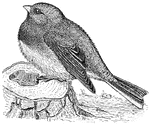
Junco
The Juncos, genus Junco, are small American sparrows. Their systematics are still very confusing after…
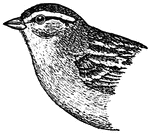
Chipping Sparrow
The Chipping Sparrow (Spizella passerina) is a species of American sparrow in the family Emberizidae.…

White-throated Sparrow
The White-throated Sparrow, Zonotrichia albicollis, is a passerine bird of the American sparrow family…
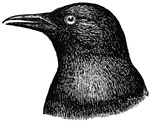
Crow
The true crows are large passerine birds that comprise the genus Corvus in the family Corvidae. Ranging…

Meadowlark
Meadowlarks are birds belonging to the genus Sturnella in the New World family Icteridae. This genus…
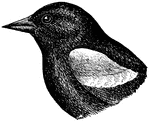
Red-winged Blackbird
The Red-winged Blackbird (Agelaius phoeniceus) is a passerine bird of the family Icteridae found in…

Red-winged Blackbird (Female)
The Red-winged Blackbird (Agelaius phoeniceus) is a passerine bird of the family Icteridae found in…
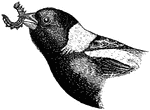
Bobolink (Male)
The Bobolink, Dolichonyx oryzivorus, is a small New World blackbird and the only member of genus Dolichonyx.…

Bobolink (Female)
The Bobolink, Dolichonyx oryzivorus, is a small New World blackbird and the only member of genus Dolichonyx.…
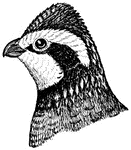
Northern Bobwhite
The Northern Bobwhite, Virginia Quail or (in its home range) Bobwhite Quail (Colinus virginianus) is…
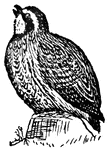
Northern Bobwhite
The Northern Bobwhite, Virginia Quail or (in its home range) Bobwhite Quail (Colinus virginianus) is…

Northern Bobwhite
The Northern Bobwhite, Virginia Quail or (in its home range) Bobwhite Quail (Colinus virginianus) is…

Common Pheasant
The Common Pheasant (Phasianus colchicus), is a bird in the pheasant family (Phasianidae). It is native…
![The Whip-poor-will or whippoorwill, Caprimulgus vociferus, is a medium-sized (22-27 cm) nightjar from North and Central America. The Whip-poor-will is commonly heard within its range, but less often seen. It is named onomatopoeically after its call. This bird is sometimes confused[1] with the related Chuck-will's-widow (Caprimulgus carolinensis) which has a similar but lower-pitched and slower call. Adults have mottled plumage: the upperparts are grey, black and brown; the lower parts are grey and black. They have a very short bill and a black throat. Males have a white patch below the throat and white tips on the outer tail feathers; in the female, these parts are light brown.](https://etc.usf.edu/clipart/57000/57013/57013_whippoorwill_mth.gif)
Whip-poor-will
The Whip-poor-will or whippoorwill, Caprimulgus vociferus, is a medium-sized (22-27 cm) nightjar from…
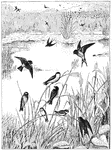
Swallow Roost
The Sand Martin (Riparia riparia) is a migratory passerine bird in the swallow family. This species…

Purple Martin (Male)
The Purple Martin (Progne subis) is the largest North American swallow at 20 cm length. Adults have…
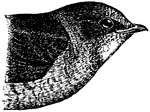
Purple Martin (Female)
The Purple Martin (Progne subis) is the largest North American swallow at 20 cm length. Adults have…
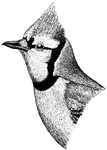
Blue Jay
The Blue Jay (Cyanocitta cristata) is a passerine bird, and a member of the family Corvidae native to…

Phoebe's Nest
An illustration of a Phoebe's nest in a box. The genus Sayornis is a small group of medium-sized insect-eating…
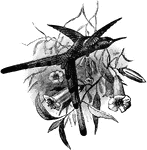
Red-Tailed Comet
A species of hummingbird, the Red-Tailed Comet (Sappho sparganura) is native to South America.

Yellow-Bellied Sapsucker
From the woodpecker family, the Yellow-Bellied Sapsucker (Sphyrapicus varius) is known for drilling…

Woodpecker Skull
"Saurognathous skull of woodpecker (Colaptes auratus). v, v, the posterior parts of the abortive vomer;…

Multi Level Bird House
An illustration of a multi level bird house commonly used for Purple Martins.

Black Phoebe
The Black Phoebe (Sayornis nigricans) is a small bird of the Tyrant Flycatcher family (Tyrannidae).
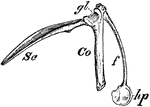
Bird Scapula
"Right shoulder-girdle or scapular arch of fowl, showing hp, the hypoclidium; f, furculum; Co, coracoid;…
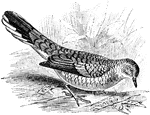
Scaly Ground Dove
The scaly ground dove (Scardafella squamosa) is a species of New World doves in the Columbidae family.
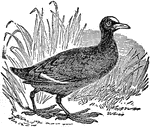
Coot
Coots , are medium-sized water birds which are members of the rail family Rallidae. They constitute…
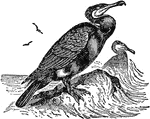
Double-crested Cormorant
The Double-crested Cormorant (Phalacrocorax auritus) is a member of the cormorant family of seabirds.…

Crane
Cranes are large, long-legged and long-necked birds of the order Gruiformes, and family Gruidae. Unlike…
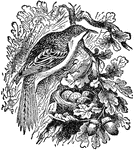
Brown Creeper
The Brown Creeper (Mohoua novaeseelandiae), also known by its Māori name, Pipipi, is a small…
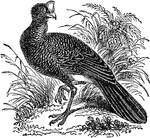
Curassow
Curassows are one of the three major groups of cracid birds. Three of the four genera are restricted…

Curlew
Curlew is the common name for the bird genus Numenius, a group of eight wader species, characterised…
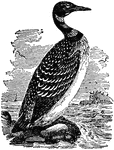
Great Northern Diver
The Great Northern Diver, known in North America as the Common Loon (Gavia immer), is a large member…
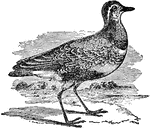
Plover
Plovers are a widely distributed group of wading birds belonging to the subfamily Charadriinae. They…

Sea Eagle
A sea eagle (also called erne or ern) is any of a group of birds of prey in the genus Haliaeetus in…
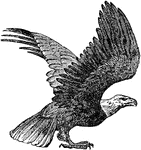
Bald Eagle
The Bald Eagle (Haliaeetus leucocephalus) is a bird of prey found in North America that is most recognizable…
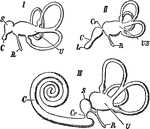
Internal Ear of Vertebrates
Internal ear of different vertebrates. I, fish; II, bird; III, mammal. Labels: U, utriculus with semicircular…

Bird Skull
"Schizognathous skull of common fowl. pmx, premaxilla; mxp, maxillopalatine; mx, maxilla; pl, palatine;…

Curlew Skull
"Schizorhinal skull of curlew (top view), showing the long cleft, a, between upper and lower forks of…
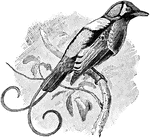
Wilson's Bird of Paradise
Cicinnurus respublica: a species of Bird of Paradise in the subgenus Diphyllodes.
Magpie Foot
"Diagram of plantar aspect of schizopelmous foot of a magpie (Pica caudata), showing the deep plantar…

Finch-Billed Myna
"Scissirostrum dubium is a species of starling in the Sturnidae family." -Whitney, 1911

Scissortailed Flycatcher
The Scissortailed Flycatcher (Milvulus forficatus) is a tyrant flycatcher in the Tyrannidae family.



